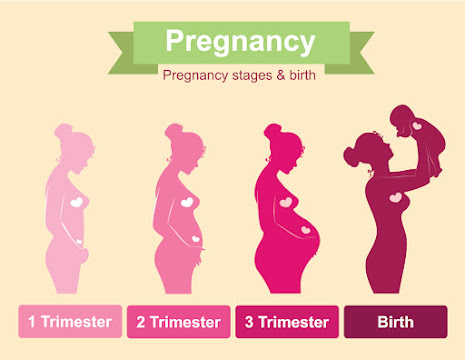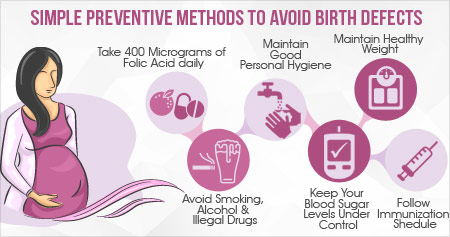15 Amazing Facts About Third Trimester Pregnancy
1. The third trimester of pregnancy is a time of excitement and anticipation as the due date approaches.
For anyone who has been pregnant, the third trimester can feel like both the longest and shortest period of time all at once. As the due date looms closer, it can be easy to feel anxious and excited all at the same time.
However, the third trimester is also a time to celebrate. After all, it marks the final stretch of pregnancy and the impending arrival of your new bundle of joy!
To help you make the most of this special time, we’ve put together a list of 15 amazing facts about third trimester pregnancy. From the physical to the psychological, this list covers everything you need to know about this final stage of pregnancy.
2. The third trimester is also a time of significant physical and emotional changes.
Inside the mother’s body, significant changes take place in the third trimester of pregnancy. It is a crucial time of physical, psychological, and emotional changes.
The baby continues to grow steadily during this time and gains more weight with each passing day. By the end of the third trimester, the average baby is around 6-9 pounds.
The mother may also feel emotional and physical changes. She may experience increased fatigue, slowed digestion, and heightened anxiety as the due date draws nearer.
Other physical changes can include increased blood pressure, swollen feet, back pain, and sciatica. They are all normal symptoms and will pass once the baby is born.
Psychologically, the mother may feel a range of emotions, from elation and anticipation to fear and a sense of being overwhelmed. This is completely normal, and even expected.
Although the third trimester can be a challenging time, both physically, mentally and emotionally, it is also a special time as the expectant mother can finally feel, touch, and see her baby through scans. For many, this is a unique and cherished experience that serves as a powerful reminder of the miracle of life.
3. Here are 12 amazing facts about third trimester pregnancy:
1. A woman’s body gains between five and ten pounds during the third trimester of pregnancy.
2. During this period, the baby grows five inches and gains about two pounds in weight.
3. The baby’s heartbeat is usually louder and stronger than ever in the third trimester.
4. The baby is likely to be more active during this period as its motor skills develop.
5. During the third trimester, the baby begins to produce and secrete hormones, including growth hormone and thyroid hormones.
6. Many babies turn head-down as they enter the third trimester, in preparation for birth.
7. Gooshy movements in the third trimester are more common as the baby's body begins to thicken and fill out.
8. The baby’s sense of smell becomes more developed, and they can will differentiate between the mother’s and father’s scent.
9. The baby’s eyelashes, eyebrows, and nail beds are all formed during the third trimester.
10.The baby’s bones are almost completely developed by the 16th week of pregnancy.
11.The baby’s lungs are almost fully developed by the 33rd week of pregnancy.
12.In the third trimester, the baby’s immune system is still developing, making the mother’s antibodies even more important
4. The third trimester is the most critical time for the baby’s brain development.
During the third trimester, a baby’s brain undergoes the most dramatic changes and development of the entire pregnancy. By week 29, the brain is already the size it will be at birth – any bigger and the baby’s head wouldn’t fit through the birth canal.
The third trimester is when the baby’s brain begins to form white matter, or the part of the brain responsible for relaying messages between neurons. This is a crucial stage in the development of the brain, and neurons are linked to build a functioning nervous system.
The baby’s cortex is also developing during the third trimester. This part of the brain is responsible for most complex mental functions, such as problem-solving and memory.
The final stage of brain development, myelination, starts in the third trimester but continues after birth. Myelination is when the brain is covered with a lipid-rich coating called myelin sheath. This coating helps messages travel more swiftly and accurately in the brain, enabling better communication between neurons.
5. Babies born in the third trimester have the highest risk of survival.
Babies born during the third trimester are considered “late preterm” babies and have a higher risk of health complications. Studies have found that babies born in the third trimester have a greater chance of developing breathing problems, feeding difficulties, and even lower Apgar scores.
In addition to the increased risk of health issues, late preterm babies are also at a higher risk for developmental delays. Studies have shown that from birth to age three, late preterm babies are at a higher risk of delays in communication, motor skills, and cognitive development.
Race and ethnicity also play a role in the risk of birth complications for late preterm babies. In the United States, Black and American Indian women are more likely than white women to have third-trimester deliveries, which puts their babies at a higher risk of health problems.
Therefore, it is important for expectant mothers to receive proper prenatal care and take preventative measures to give their babies the best chance at survival and healthy development.
6. Third trimester babies are more likely to be born with congenital disabilities.
Congenital disabilities are conditions that occur due to genetic or environmental factors before birth. They can range from mild issues with vision and hearing to more severe conditions, such as cerebral palsy, Down syndrome, and spina bifida.
Studies have found that babies born in the third trimester are more likely to be born with congenital disabilities. This increased risk is believed to be because these babies are still developing and haven’t had enough time to fully develop in the womb.
Other factors that raise the risk of congenital disabilities in third-trimester babies include smoking and alcohol use during pregnancy, certain infections and immune diseases, and misuse of certain medications. For this reason, it is important for mothers to be mindful of any medications they take during their pregnancy, and to talk to their doctor about any concerns.
It is also important for expectant mothers to practice self-care, get regular prenatal care, and seek help if they have any mental health issues. This can help reduce the risk of congenital disabilities for their babies.
7. The length of the third trimester can vary from woman to woman.
The length of the third trimester can vary from woman to woman. For most women, the third trimester typically lasts from week 28 to week 40 of the pregnancy. But this is just the average length of a full-term pregnancy; some women may experience preterm labor or a late-term labor, each of which can shorten or extend the length of the third trimester.
Preterm labor is labor that begins before the 37th week of pregnancy. This is a serious condition that can lead to preterm birth, which can put both the baby and the mother at risk. Late-term labor is labor that begins after week 42 of pregnancy. In this case, the baby is more likely to have health complications resulting from being born at full-term or post-term.
It is important for pregnant women to receive regular prenatal care and to be aware of the signs of preterm labor. This can help ensure the baby reaches full-term and is less likely to experience any health complications.
8. During the third trimester, the fetus undergoes significant development.
During the third trimester, the fetus undergoes significant development. This is the time when most organs are fully developed, and the fetus is gaining weight and preparing for birth. By the end of the third trimester, the fetus is usually around 7-9 pounds, with a full-term baby weighing around 8 pounds, 6 ounces.
The baby's immune system is also developing in the third trimester. During this time, the production of antibodies increases dramatically, which allows the baby to fight off germs and infections after birth.
Additionally, the baby's lungs are also maturing during the third trimester; this allows the baby to take a breath and transition from the womb to the outside world when it is eventually born.








.jpg)
